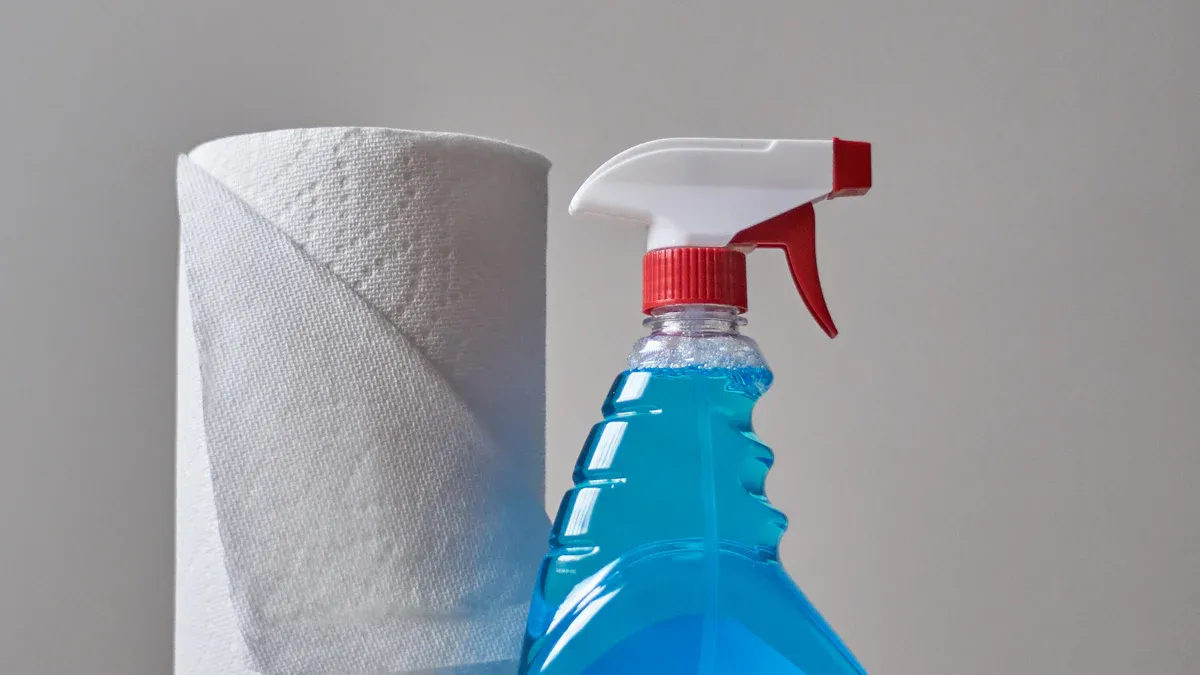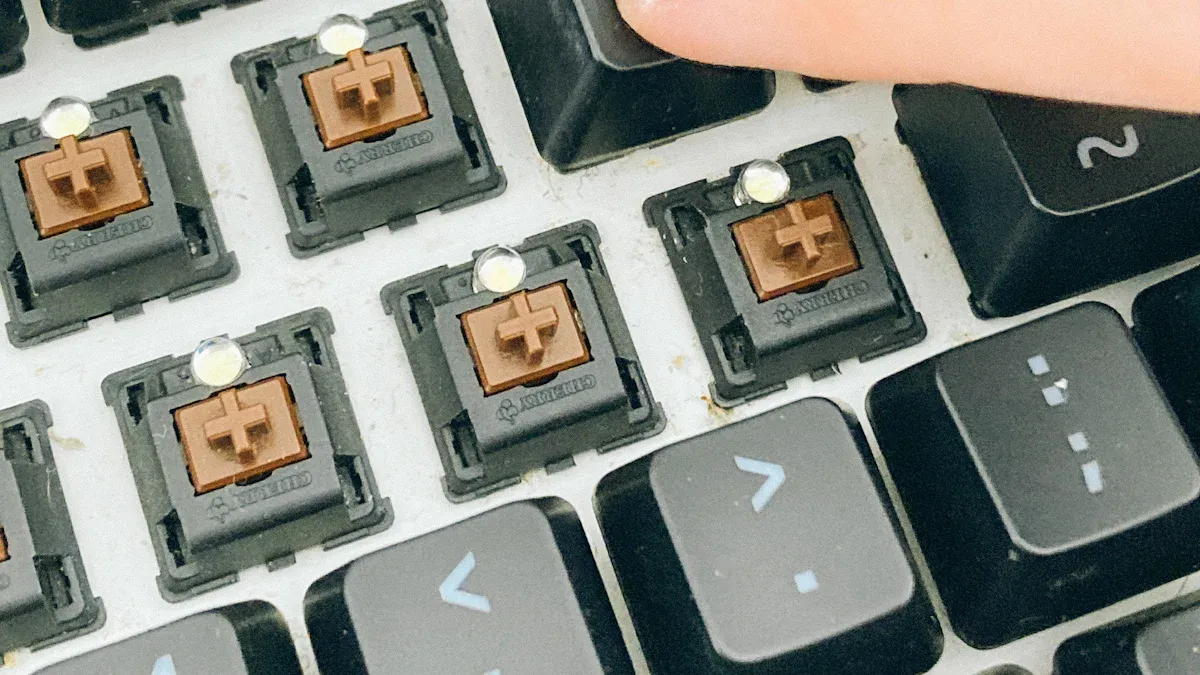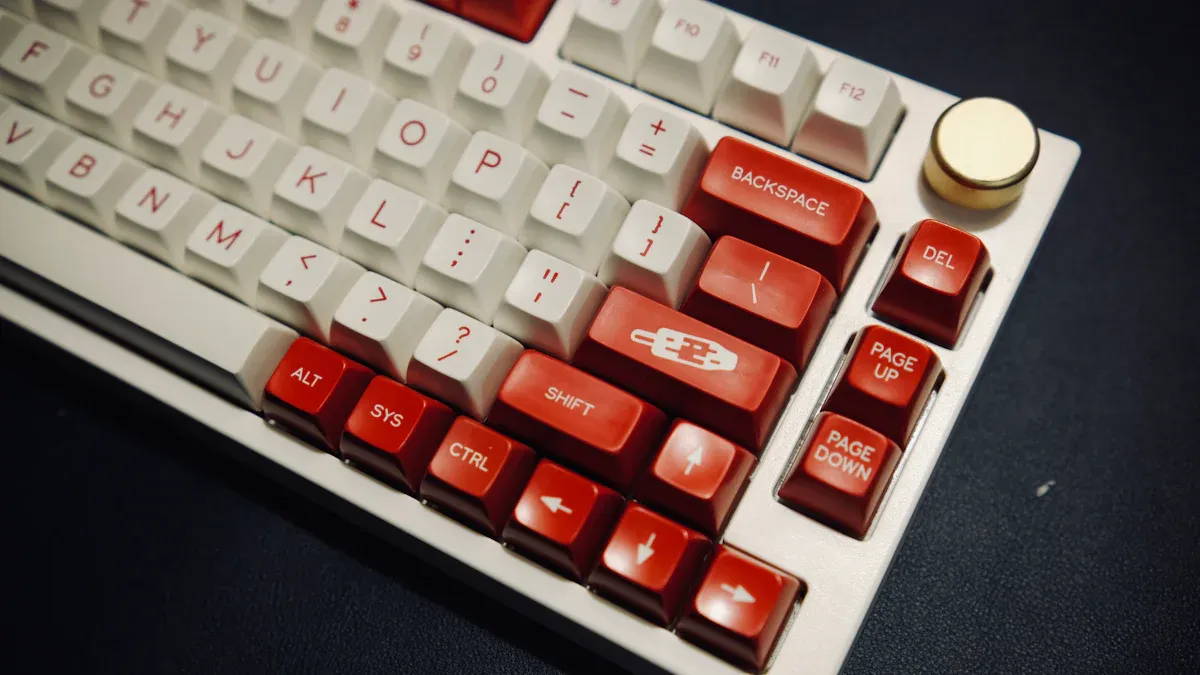
あなたを守る 数値工業用語キーパッド clean isn’t just about appearances—it’s about preserving its functionality. Dust and grime can block the Braille dots, making them harder to read. Regular cleaning ensures users can rely on it for accessibility. For devices like the IP65 Customized 12 Keys Industrial Keypad, maintenance also extends their durability.
キーテイクアウト
- Cleaning your Braille keypad often helps it work well. Clean it depending on how much you use it to keep it in good shape.
- Use gentle cleaners and soft tools to protect the keypad. Stay away from strong chemicals or rough items that can damage the Braille dots.
- Check your keypad often for dirt or damage. Fix problems quickly to make it last longer and stay easy to use.
How Often Should You Clean a Numeric Industrial Braille Keypad?
Keeping your numeric industrial Braille keypad clean is essential, but how often should you do it? The answer depends on several factors, including how often the keypad is used and the environment it’s in. Let’s break it down so you can create a cleaning routine that works for you.
Factors That Influence Cleaning Frequency
Several things can affect how often you need to clean your keypad:
- Usage Level: If the keypad is used daily, especially in high-traffic areas, it will collect dirt and oils faster.
- Environment: Keypads in dusty or humid environments tend to get dirty more quickly. Outdoor keypads may also face exposure to rain, pollen, or other debris.
- User Base: If multiple people use the keypad, it’s more likely to accumulate germs and grime.
ヒント: Pay attention to where your keypad is installed. A keypad in a clean office will need less frequent cleaning than one in a factory or outdoor setting.
Recommended Cleaning Schedule Based on Usage
To keep your numeric industrial Braille keypad in top shape, follow these general guidelines:
- Light Use (1-2 times per day): Clean every 2-4 weeks.
- Moderate Use (3-10 times per day): Clean weekly.
- Heavy Use (more than 10 times per day): Clean every 2-3 days.
If your keypad is in a public or shared space, consider cleaning it daily to maintain hygiene and functionality.
Warning Signs That Indicate Immediate Cleaning Is Needed
Sometimes, you can’t wait for the next scheduled cleaning. Here are some signs that your keypad needs immediate attention:
- Braille Dots Feel Sticky or Slippery: This can make the keypad harder to use for visually impaired individuals.
- Visible Dirt or Debris: Dust or grime on the surface can block the Braille dots or damage the keypad over time.
- Unresponsive Keys: Dirt buildup can interfere with the keypad’s functionality.
- Unpleasant Odors: This could indicate bacteria or mold growth, especially in humid environments.
お問い合わせ: If you notice any of these issues, clean your keypad as soon as possible to prevent further damage or usability problems.
By understanding these factors and warning signs, you can ensure your numeric industrial Braille keypad stays clean and functional for years to come.
Tools and Materials for Cleaning a Numeric Industrial Braille Keypad

Essential Cleaning Tools
To clean your numeric industrial Braille keypad effectively, you’ll need a few basic tools. Start with a soft microfiber cloth. It’s gentle on the surface and won’t scratch the Braille dots. A small, soft-bristled brush, like a toothbrush, works great for getting into tight spaces between the keys. You’ll also want a can of compressed air. It’s perfect for blowing out dust and debris from hard-to-reach areas.
ヒント: Keep these tools in a dedicated cleaning kit so you’re always prepared when it’s time to clean.
Safe Cleaning Solutions to Use
When it comes to cleaning solutions, stick with mild, non-abrasive options. A mixture of warm water and a few drops of dish soap is usually all you need. For disinfecting, use a diluted isopropyl alcohol solution (70% or less). Apply it sparingly to your cloth—never directly on the keypad. This keeps the keypad safe while removing germs and grime.
お問い合わせ: Always test any cleaning solution on a small, inconspicuous area first to ensure it doesn’t damage the keypad.
Materials and Practices to Avoid
Avoid harsh chemicals like bleach or ammonia. These can damage the keypad’s surface and Braille dots. Stay away from abrasive scrubbers or steel wool, as they can scratch the keypad. Never soak the keypad in water or spray liquids directly onto it. Excess moisture can seep inside and cause permanent damage.
By using the right tools and avoiding harmful practices, you’ll keep your numeric industrial Braille keypad in excellent condition for years to come.
Step-by-Step Guide to Cleaning a Numeric Industrial Braille Keypad

Preparing the Keypad for Cleaning
Before you start cleaning, take a moment to prepare the keypad. This step ensures you don’t accidentally damage it or miss any important areas. Here’s what you need to do:
- Turn Off the Device: If the keypad is part of an electronic device, make sure it’s powered off. This prevents any electrical issues during cleaning.
- Disconnect from Power: Unplug the keypad or remove any batteries. This step is crucial for safety and avoids short circuits.
- Inspect the Keypad: Look for visible dirt, grime, or stuck debris. Pay close attention to the Braille dots and spaces between the keys.
- Gather Your Tools: Have your cleaning tools and solutions ready. A microfiber cloth, soft brush, and a safe cleaning solution are all you need.
ヒント: Place the keypad on a clean, flat surface before you begin. This keeps it stable and prevents accidental drops.
Cleaning the Surface and Braille Dots Safely
Now that your keypad is ready, it’s time to clean it. Follow these steps to ensure you clean both the surface and Braille dots without causing damage:
- Wipe the Surface: Dampen a microfiber cloth with your cleaning solution. Gently wipe the surface of the keypad, focusing on areas with visible dirt. Avoid soaking the cloth—just a little moisture is enough.
- Clean Between the Keys: Use a soft-bristled brush to remove dirt and debris from the spaces between the keys. Move the brush gently to avoid scratching the keypad.
- Focus on the Braille Dots: The Braille dots are the most critical part of the keypad. Use the brush or a cotton swab to clean them carefully. Make sure you don’t press too hard, as this could damage the dots.
- Use Compressed Air: For hard-to-reach areas, a can of compressed air works wonders. Hold it upright and spray short bursts to blow out dust and debris.
お問い合わせ: Never spray cleaning solutions directly onto the keypad. Always apply them to your cloth or brush first.
Proper Drying Techniques and Reassembly
Drying the keypad properly is just as important as cleaning it. Any leftover moisture can cause damage over time. Here’s how to do it right:
- Pat Dry with a Cloth: Use a dry microfiber cloth to gently pat the keypad. Focus on removing any visible moisture.
- Air Dry Completely: Leave the keypad in a well-ventilated area to air dry. Avoid using heat sources like hair dryers, as they can warp the keypad or damage the Braille dots.
- Inspect for Residual Moisture: Before reassembling, check for any remaining moisture. If you find any, dry it with the cloth.
- Reconnect and Test: Once the keypad is completely dry, reconnect it to its power source. Turn it on and test the keys to ensure everything works as expected.
ヒント: Make drying a priority. Even a small amount of moisture can lead to long-term issues with your numeric industrial Braille keypad.
By following these steps, you’ll keep your keypad clean, functional, and ready for use. Regular cleaning not only improves its performance but also extends its lifespan.
Additional Tips for Maintaining and Extending the Life of Your Keypad
Preventing Spills and Moisture Exposure
Spills and moisture are the biggest enemies of your keypad. To keep it safe, avoid placing drinks or liquids near it. If you’re using the keypad in a humid environment, consider adding a protective cover. These covers shield the keypad from accidental spills and moisture buildup.
If a spill happens, act fast. Turn off the device and disconnect it from power. Use a dry cloth to soak up the liquid immediately. For sticky spills, follow the cleaning steps mentioned earlier to prevent long-term damage.
ヒント: Keep silica gel packets nearby. They absorb moisture and help protect your keypad from humidity.
Best Practices for Storing the Keypad
Proper storage can make a big difference in how long your keypad lasts. When not in use, store it in a clean, dry place. Avoid areas with extreme temperatures or direct sunlight, as these can warp the keypad or fade the Braille dots.
If you’re storing the keypad for an extended period, wrap it in a soft cloth or place it in a protective case. This prevents dust and debris from settling on the surface.
お問い合わせ: Always disconnect the keypad from power before storing it to avoid accidental damage.
Conducting Regular Inspections for Damage or Wear
Regular inspections help you catch small issues before they become big problems. Check the keypad for signs of wear, like faded Braille dots or sticky keys. Look for cracks or loose parts that might affect its functionality.
Test the keys to ensure they respond properly. If you notice any issues, address them right away. Sometimes, a quick cleaning or minor repair can save you from replacing the entire keypad.
Reminder: Make inspections part of your routine. A quick check every few weeks can go a long way in maintaining your 数値工業用語キーパッド.
Regular cleaning and maintenance of your numeric industrial Braille keypad make a big difference. It keeps the device functional and reliable for years. By following these tips, you’ll protect your investment and ensure it stays accessible for everyone. Start building these habits today, and you’ll thank yourself later!
よくある質問
How do I know if my keypad needs cleaning?
Look for sticky keys, faded Braille dots, or visible dirt. If the keys stop responding, it’s time for a quick clean.
Can I use household cleaners on my keypad?
Stick to mild solutions like dish soap or diluted alcohol. Avoid harsh chemicals like bleach—they can damage the keypad’s surface and Braille dots.
What’s the best way to dry the keypad after cleaning?
Pat it dry with a microfiber cloth. Let it air dry completely in a ventilated area. Avoid heat sources like hair dryers.


